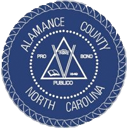Scrapie Regulation Updates
go.ncsu.edu/readext?601630
en Español / em Português
El inglés es el idioma de control de esta página. En la medida en que haya algún conflicto entre la traducción al inglés y la traducción, el inglés prevalece.
Al hacer clic en el enlace de traducción se activa un servicio de traducción gratuito para convertir la página al español. Al igual que con cualquier traducción por Internet, la conversión no es sensible al contexto y puede que no traduzca el texto en su significado original. NC State Extension no garantiza la exactitud del texto traducido. Por favor, tenga en cuenta que algunas aplicaciones y/o servicios pueden no funcionar como se espera cuando se traducen.
Português
Inglês é o idioma de controle desta página. Na medida que haja algum conflito entre o texto original em Inglês e a tradução, o Inglês prevalece.
Ao clicar no link de tradução, um serviço gratuito de tradução será ativado para converter a página para o Português. Como em qualquer tradução pela internet, a conversão não é sensivel ao contexto e pode não ocorrer a tradução para o significado orginal. O serviço de Extensão da Carolina do Norte (NC State Extension) não garante a exatidão do texto traduzido. Por favor, observe que algumas funções ou serviços podem não funcionar como esperado após a tradução.
English
English is the controlling language of this page. To the extent there is any conflict between the English text and the translation, English controls.
Clicking on the translation link activates a free translation service to convert the page to Spanish. As with any Internet translation, the conversion is not context-sensitive and may not translate the text to its original meaning. NC State Extension does not guarantee the accuracy of the translated text. Please note that some applications and/or services may not function as expected when translated.
Collapse ▲The U.S. Department of Agriculture’s (USDA) Animal Plant Health and Inspection Service (APHIS) has updated the scrapie regulations and program standards. New scientific evidence has led to the recent changes within the program. Specifically, genotypic studies (genetic information) have shown certain sheep genotypes are less susceptible or resistant to contracting the disease.
Scrapie is a degenerative and transmissible disease that affects the central nervous system of small ruminants and eventually results in death. Controlling the spread of disease is difficult because it has a long incubation period without evident clinical disease signs. Eradiation of scrapie from sheep flocks and goat herds is essential to the small ruminant industry.
The changes made to scrapie program will affect sheep and goat producers, handlers and haulers of sheep and goats across state lines, and State governments.
The primary changes include:
- Modified definition of high-risk animals. Animals with resistant or less susceptible genotypes are now classified as minimal risk animals. Therefore, producers do not need to depopulate or restrict this category of animals to their farm.
- Increased animal traceability. Strengthen identification and disease traceability for sheep and goats.
- Improved recordkeeping. More consistent, uniform recordkeeping for both sheep and goats.
- Higher indemnity prices. Eligible to certain pregnant ewes and does and early maturing ewes and does.
- Increasing genetic testing. For identifying and assigning risk levels to animals.
Requirements for Official ID Tag:
- Slaughter channels: to a terminal feedlot, slaughter, slaughter only auctions, personal consumption.
- Wethers 18 months or older.
- Not in slaughter channels: Ewes, rams, does, bucks of any age need to have an Interstate Certificate of Veterinary Inspection issued by an Accredited Veterinarian.
***When in doubt and leaving your farm, put in an official ID eartag***
For more information:
Written By Emily Cope, Ph.D.
Animal Science Specialist, North Carolina A&T State University




